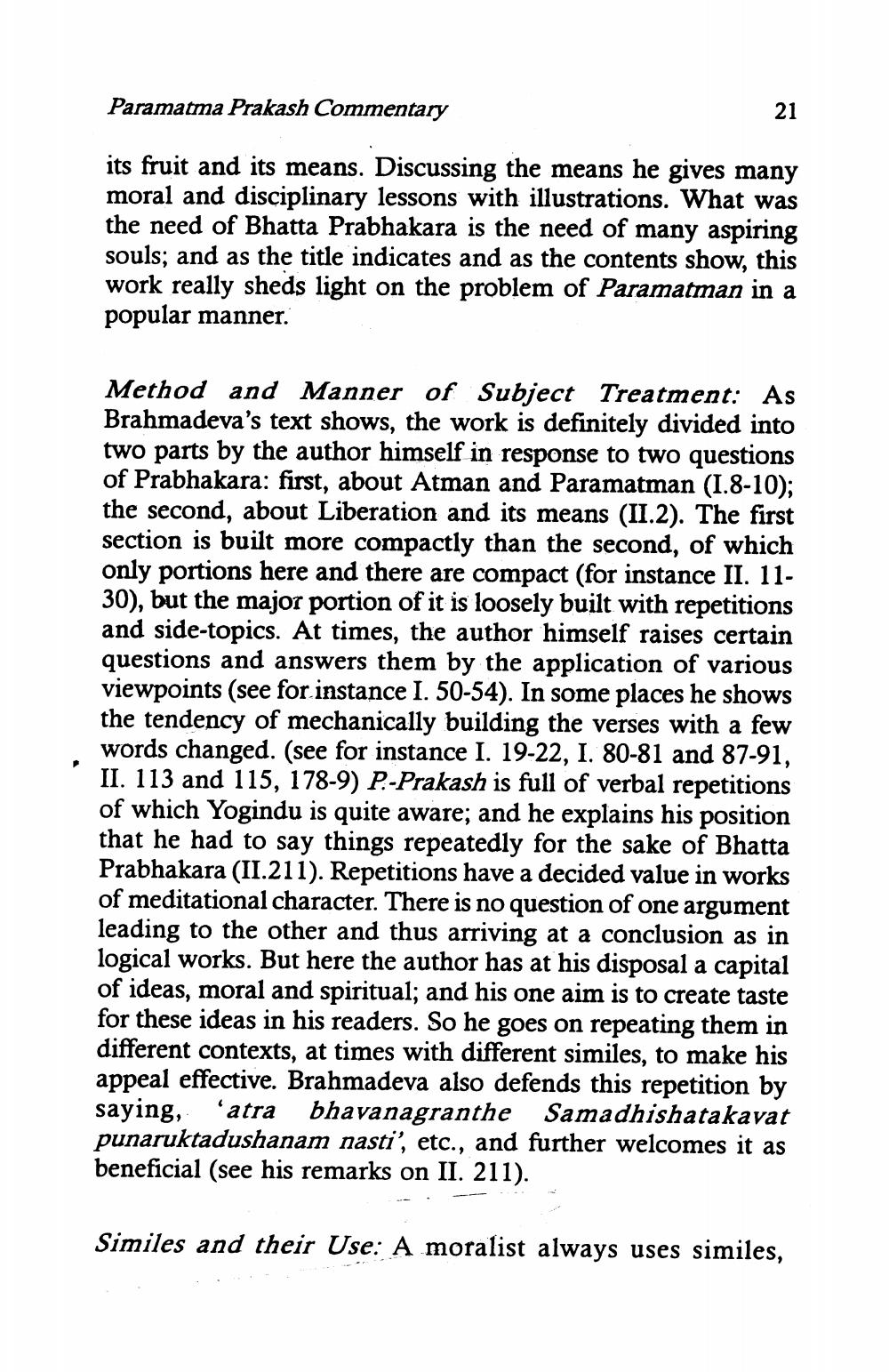________________
Paramatma Prakash Commentary
its fruit and its means. Discussing the means he gives many moral and disciplinary lessons with illustrations. What was the need of Bhatta Prabhakara is the need of many aspiring souls; and as the title indicates and as the contents show, this work really sheds light on the problem of Paramatman in a popular manner.
21
Method and Manner of Subject Treatment: As Brahmadeva's text shows, the work is definitely divided into two parts by the author himself in response to two questions of Prabhakara: first, about Atman and Paramatman (1.8-10); the second, about Liberation and its means (II.2). The first section is built more compactly than the second, of which only portions here and there are compact (for instance II. 1130), but the major portion of it is loosely built with repetitions and side-topics. At times, the author himself raises certain questions and answers them by the application of various viewpoints (see for instance I. 50-54). In some places he shows the tendency of mechanically building the verses with a few words changed. (see for instance I. 19-22, I. 80-81 and 87-91, II. 113 and 115, 178-9) P-Prakash is full of verbal repetitions of which Yogindu is quite aware; and he explains his position that he had to say things repeatedly for the sake of Bhatta Prabhakara (II.211). Repetitions have a decided value in works of meditational character. There is no question of one argument leading to the other and thus arriving at a conclusion as in logical works. But here the author has at his disposal a capital of ideas, moral and spiritual; and his one aim is to create taste for these ideas in his readers. So he goes on repeating them in different contexts, at times with different similes, to make his appeal effective. Brahmadeva also defends this repetition by saying, 'atra bhavanagranthe Samadhishatakavat punaruktadushanam nasti', etc., and further welcomes it as beneficial (see his remarks on II. 211).
Similes and their Use: A moralist always uses similes,




